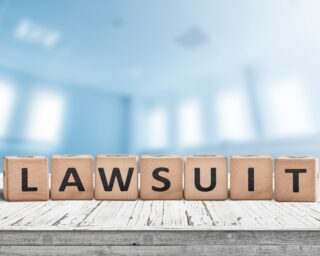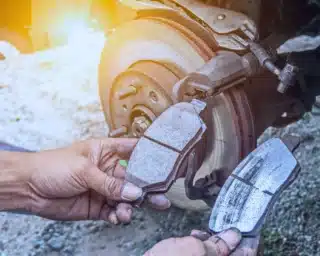You have the right to sue a company for a faulty product that injured you or a loved one. You must prove four specific elements of a product liability claim to obtain fair compensation for your injuries, losses, and damages. You must demonstrate that you sustained an injury from a product. You must present evidence to show that the product was faulty. You must provide proof of using the product as intended. You must also provide sufficient evidence to establish a clear connection between your injury and the faulty product.
It is crucial to determine the type of your product liability claim. It is also important to identify all potentially at-fault parties to include in your claim. Involving a product liability attorney in Nevada shortly after getting injured by a faulty product allows you to build a strong claim and maximize your chance of recovering reasonable compensation. The attorney guides you on the steps to take to safeguard your rights to compensation and the evidence you need to preserve to strengthen your claim.
When Can You Sue a Company for a Faulty Product?
You can file a product liability lawsuit against a company when you have suffered serious injuries because of a product that fails to function as intended or the product’s insufficient, incorrect, or missing safety information. You have grounds to sue a company for a faulty product if you can prove the following elements:
The Product Caused Your Injuries
Showing that a product is faulty or harmful is not a sufficient legal basis to sue a company for a faulty product. You must provide evidence of injury or harm caused by the product to have a valid product liability claim. Medical documentation and doctor’s notes can help prove your injury.
The Product was Faulty
You must demonstrate that the product, its safety information, or its packaging was defective. Lack of safety warnings also qualifies as a defect. Evidence of a defect includes the product itself, the product’s safety information, and documents obtained from the manufacturer or other liable parties through discovery. Expert testimony explaining how the product was faulty is also a crucial form of evidence.
You Used the Product for Its Intended Purpose
You must show that you used the product as intended by its manufacturer to have a viable claim. You might lose your right to compensation if you modified the product or used it improperly. You will need the product itself to prove that you did not modify or change the product from its original condition.
A Direct Connection Between the Injury and the Faulty Product
You cannot just claim that you suffered an injury after using the product. Instead, you must present proof of a direct link between the defect and your injury. Your medical records documenting the injury you sustained from using the product can help establish this link. You also need a medical expert witness to explain how the faulty product contributed to your injuries.
What Is Product Liability?
Product liability is a legal term that describes the responsibility for injuries or losses caused by a defective product imposed on any or all parties involved in the manufacture and distribution of that product. Under Nevada’s product liability laws, a product must be reasonably safe for consumers. A product with an anticipated defect or risk cannot be considered reasonably safe for consumers.
While federal laws might be applicable in product liability cases, federal product liability laws do not exist. Claims involving faulty products rely on state laws and are filed under one or more of the three product liability theories:
- Strict liability
- Negligence
- Breach of warranty
A product liability lawsuit can arise from three main factors. These factors include products with a design defect, products with a manufacturing defect, and products with inappropriate safety warnings or instructions.
All these factors provide sufficient grounds for pursuing compensation from the liable party. An investigation is necessary to determine all the potentially liable parties. Manufacturers and quality control engineers are usually liable in product liability claims involving manufacturing defects.
Manufacturers and designers are potentially at-fault parties in claims involving design defects. The manufacturer and external professionals hired by that manufacturer to develop safety information are potentially liable parties in claims involving improper or missing warnings or instructions. Wholesalers, distributors, and retailers are other potentially liable parties in product liability cases, as they play a crucial role in the distribution chain.
Common Types of Product Liability Cases
Product liability cases stem from injuries caused by defective products. These cases fall into three different categories based on the cause of the defect. They include:
Design Defect Product Liability Cases
A product liability case involving a defectively designed product claims the product is fundamentally risky or unsafe due to its design alone. Simply put, the manufacturing process complied with the product design specification. The parties that created the design specifications, however, made a mistake or failed to account for predictable dangers.
A top-heavy sport utility vehicle (SUV) with a high risk of flipping over is an example of a design defect. A design defect may affect a whole line of products, resulting in a recall. The company in question incurs costs of compensating the injured parties, changing the design, and creating the products differently. For these reasons, companies usually defend product liability claims involving design defects aggressively, making them expensive to prove.
Manufacturing Defect Product Liability Cases
Product liability cases involving manufacturing defects claim that an error in the manufacturing process made the product dangerous or unsafe. In other words, the manufacturing process deviated from the design specification.
A manufacturing defect might affect only a specific product in the entire product line. An example would be an SUV with faulty brakes that make it prone to accidents. In this case, the defect may have stemmed from a mistake in manufacturing those specific brakes.
Labeling or Warning Defect Product Liability Cases
Product liability lawsuits involving labeling or warning defects arise when businesses breach their duty of care to sufficiently inform users of inherent risks their products carry. These inherent risks include choking, allergic reactions, flammability, and electrocution. These risks might be avoidable if appropriate and sufficient warnings or usage instructions are provided.
Labeling or warning defects are potential causes of product liability in the cannabis industry. The reason is that manufacturers may fail to include a label specifying the possible risks or adverse effects of a cannabis product. You might have grounds to sue a manufacturer if you can show that you sustained injuries from a risk that was not disclosed and had used the product as intended.
How to Sue a Company for a Faulty Product
Filing a complaint and other required documents with the court clerk is the first step in suing a company for a faulty product. The court clerk will issue a signed and sealed summons upon receiving your complaint. You can then serve the complaint and summons on the defendant(s) according to your state’s Rule of Civil Procedure.
It’s in your best interest to work with a skilled and aggressive product liability attorney when suing a company for a faulty product. The attorney will analyze the specific details of your case to determine the type of product liability claim to file and all potentially liable parties to include in the lawsuit.
Your attorney performs an independent investigation to collect evidence to support each element of your product liability claim. The attorney interviews you and any third party with information that could help your case. The following are forms of evidence your attorney collects:
- Your testimony and third-party statements
- The faulty product itself
- Pictures of the faulty product and your injuries
- A video of the product failing
- Your medical records and documentation
- Proof of your financial losses
- Expert testimony describing your injuries’ severity and linking them to the faulty product.
Your attorney will also gather documentation and information in the defendant’s possession that may help support your claim. He or she can do that through a discovery process. Design records and documents related to the manufacturing process are some pieces of evidence your attorney can obtain through the discovery process.
Most product liability cases in Nevada settle before trial. Your attorney knows there is still a chance that your case might go to trial. So, the attorney will prepare thoroughly to provide you with effective representation at trial. This preparation involves creating a detailed opening statement outlining what the evidence will demonstrate at trial. It also involves preparing witness statements and questions to ask the defendant’s witnesses.
Potentially Recoverable Damages in a Product Liability Claim
You may collect compensatory damages from any liable party in a successful product liability claim. Compensatory damages cover your injuries and expenses, including medical costs and lost earnings. They can also compensate you for your pain and suffering. You might recover significant pain and suffering damages if you sustained severe, long-term, or disfiguring injuries.
You may also recover punitive damages if the jury or court finds the manufacturer or other defendants engaged in willful, outrageous, or egregious conduct. The jury or court usually awards these damages to punish the defendant and discourage similar misconduct from others.





